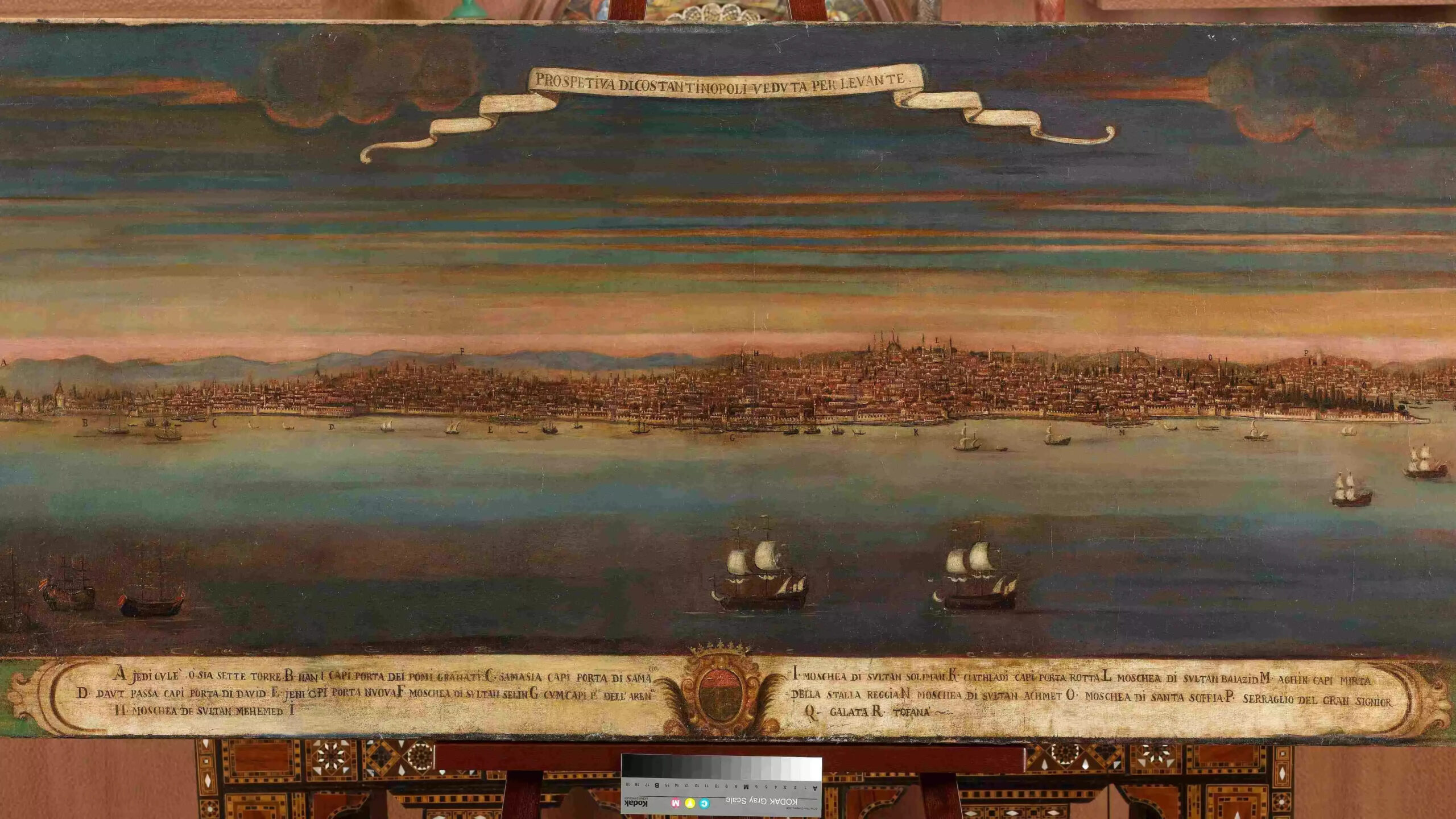The new exhibition from the Suna and İnan Kıraç Foundation’s two institutions, Pera Museum and the Istanbul Research Institute, “On the Spot: Panoramic Gaze on Istanbul, a History” offers viewers a new look on Istanbul’s role in the global history of panoramic representation.
Covering a period spanning from the 15th to the 20th centuries, the exhibition includes a unique rotunda to experience a previously unknown 19th-century panorama of Istanbul in an immersive and interactive setting, as well as a 3D animation of a widely recognized panorama.
Exploring the “panorama” medium from a critical standpoint, the exhibition is bringing together some of the most remarkable works by artists who captured a panoramic view of Istanbul, such as Seutter, Merian, Feraud, Barker, Gudenus, Schranz, Melling, Dunn, and Robertson, and also reveals how the panoramic perspective has been used to document different phenomena in Istanbul’s history, from fire disasters to industrialization.
In the exhibition, curated by Çiğdem Kafescioğlu, K. Mehmet Kentel, and M. Baha Tanman, the joint curatorial efforts provide a close examination of the circulation of this representational form in the Ottoman world and Europe through a diverse selection of materials, including ephemera and archival documents in addition to paintings, prints, and photographs, while exploring the fluidity within this diversity and the dialogues between different media.
While concentrating on 19th-century panoramas and panoramic images, On the Spot invites its audience to a comprehensive reconsideration of the long history of the panoramic perspective dating back to the early modern period, and Istanbul’s position within this history.
The seeds of “On the Spot: Panoramic Gaze on Istanbul, a History” were sown four years ago with the acquisition of an undated and anonymous 3.5 meters-long-Istanbul panorama, that was incorporated into the Suna and İnan Kıraç Foundation Collection. This unique work depicting a view from Istanbul’s Galata Tower inspired the creation of a 360-degree cityscape that would provide an interactive digital experience.
Istanbul, the city to inspire the ‘panorama’
Consisting of three sections, the exhibition starts with an overview of panoramic views of Istanbul dating to the early modern era (15th through 18th centuries).
Displaying the significant items and moments in this trajectory, this section also aims to highlight connections between different modes of picturing the city in its totality in the early modern era. Henry Aston Barker’s panorama of Constantinople, drafted in Istanbul in 1800 and displayed in London in 1801 and 1802, marks a defining moment in the genre’s modern history: This is the first time the word was actually used in connection with Istanbul’s imagery and the first time such imagery was intended for the enjoyment of a European public.
Panoramic photography, which is addressed in the following section, entered the 19th-century visual universe with pomp and circumstance.
The heightened sense of reality its practitioners promised captivated the public imagination and experts alike, from urban reformists to insurance agents who were drawn to this new medium that could more easily engender multiplication in different formats, leading to a visual inflation of countless works of panoramic images of the city’s varying vistas.
The final section of the exhibit turn to intermedial transitions, between the images circulating in different formats and their continued connections within diverse modes of visual representation. The culture of spectacle attached to the dissemination and consumption of panoramic images, and the expanding commodity culture of early 20th-century, brought the panoramic image to bear on an increasingly diverse set of objects, ranging from trade cards to delicately embroidered silks.
The exhibition will be open to visitors at Pera Museum’s through March 24, 2024.









